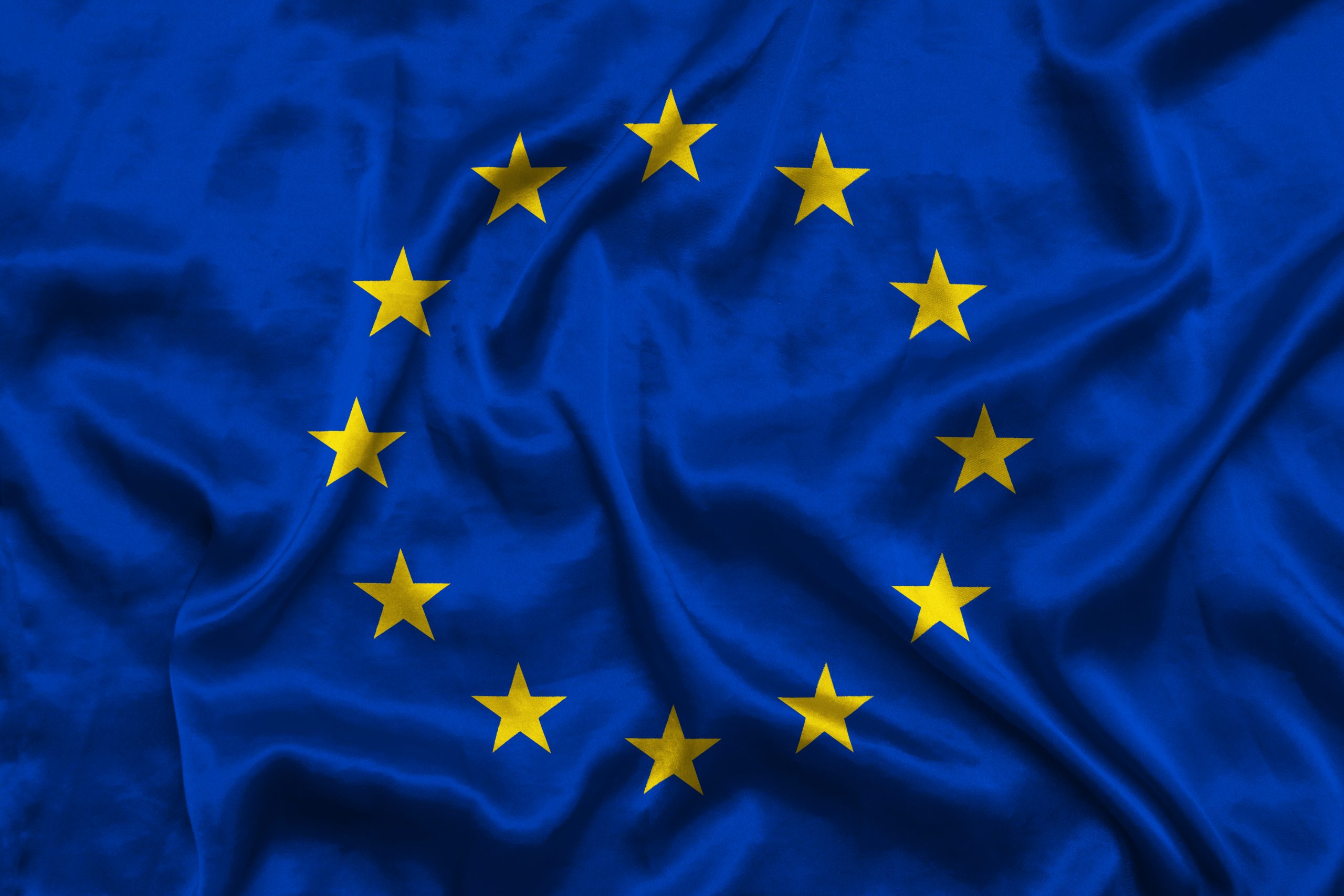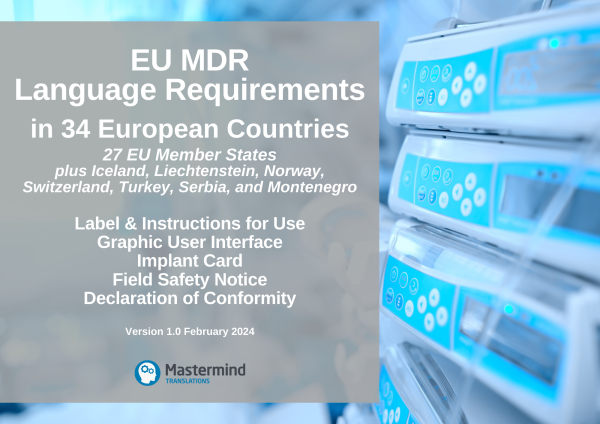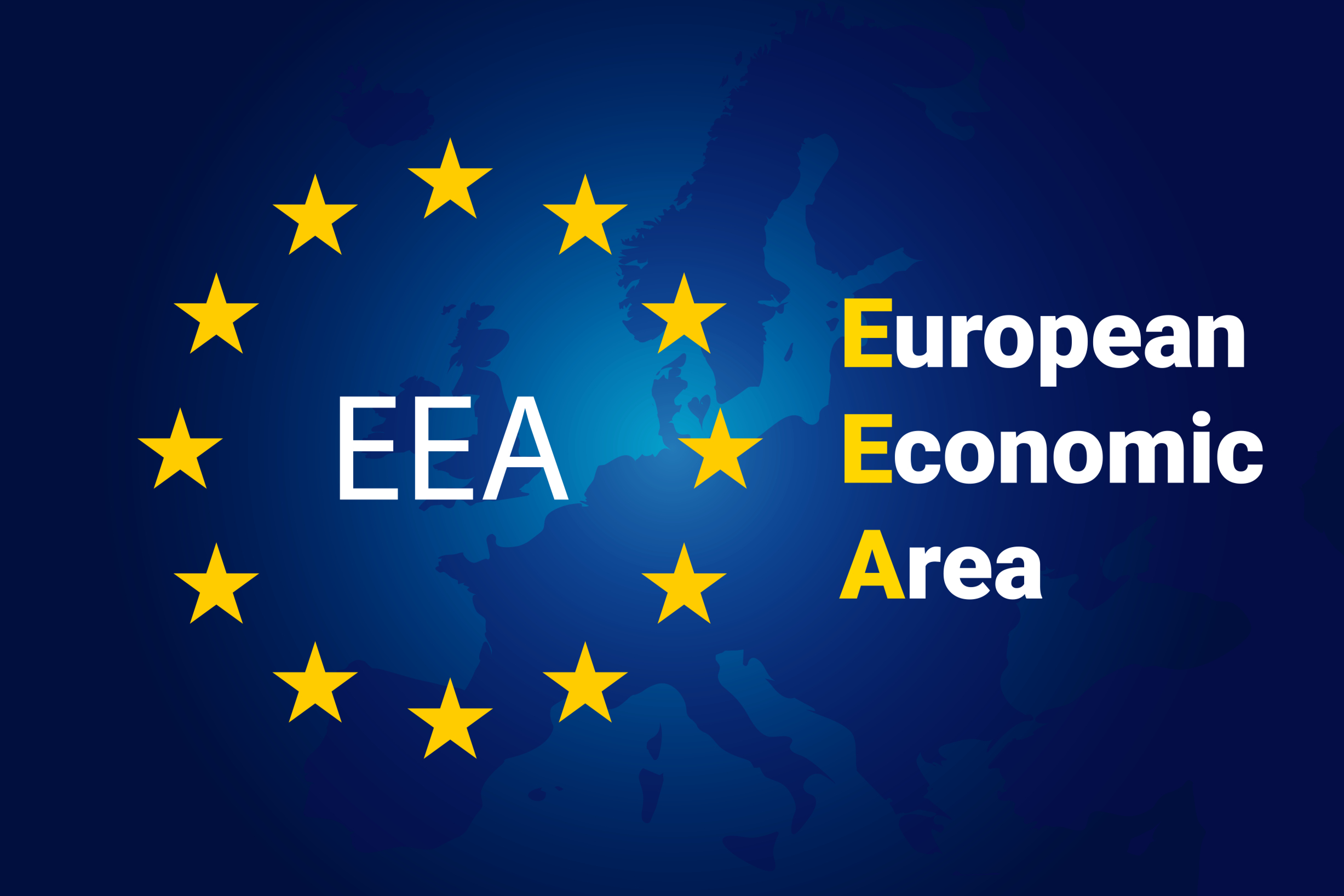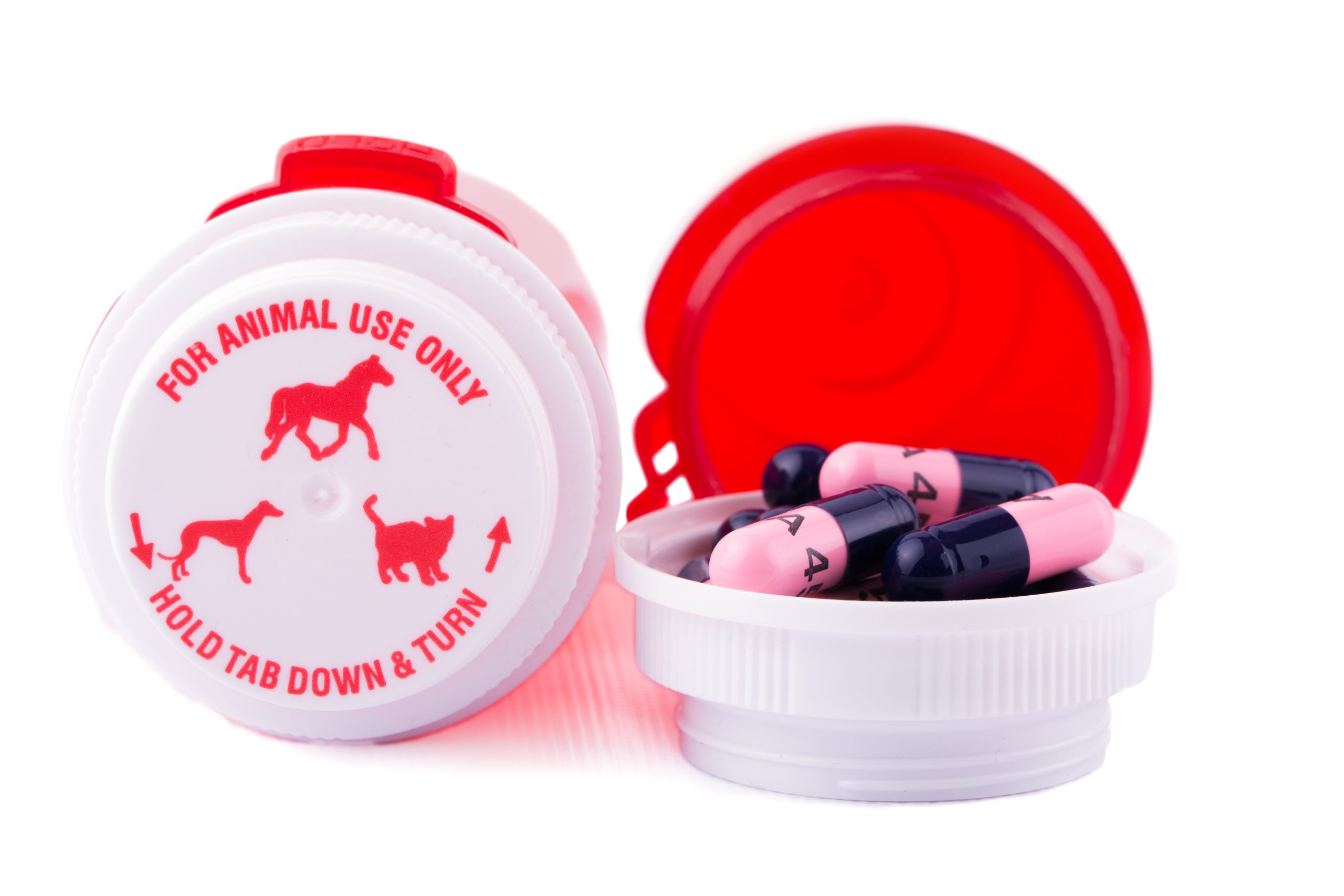Following a transition period of four years, the long-awaited Medical Device Regulation (MDR) 2017/745/EU finally became fully applicable on 26 May 2021. It makes provisions in several places that the information provided by the manufacturer with a medical device must be available in the official language(s) accepted in the Member State where it is being sold. In this article, we will discuss the MDR language requirements for medical devices placed on the EU market.
Estimated at approximately €120 billion in 20181, the EU market for medical devices is the second largest in the world. To take advantage of its commercial opportunities, medical device companies must comply with the new Medical Device Regulation (MDR) 2017/745/EU that became fully applicable on 26 May 2021. To navigate the myriad of translation requirements for medical devices, medical device manufacturers as well as distributors and importers need to have a solid understanding of the relevant language-related parts of the new MDR, the rationale behind them, the practical implications of these requirements in individual EU countries as well as subsequently published EU guidelines.
Before we delve into the complexities of the MDR, we would like to explain briefly why regulation of the language requirements for medical devices in the EU market was needed.
What drives the need for the language requirements for medical devices sold in the EU market?
In the spirit of the EU motto ‘United in diversity’, linguistic diversity is considered one of the fundamental values of the EU. The Charter of Fundamental Rights of the EU, made legally binding by the Treaty of Lisbon, prohibits discrimination on grounds of language (Article 21) and places an obligation on the EU to respect linguistic diversity (Article 22). This underlying principle of multilingualism is further anchored in Article 3(3) of the Treaty on European Union, which states that the Union shall respect its rich cultural and linguistic diversity. The MDR satisfies this obligation with its provisions on the mandatory language requirements for medical devices placed on the EU market.
More importantly, these compulsory language requirements for medical devices are among a number of stringent new measures introduced by the MDR, with the common objective of ensuring that all medical devices used in the EU market are safe and effective. Problems with varying interpretation of the rules on language requirements, as well as specific incidents — such as the incorrectly performed knee replacement surgeries which we discuss in Why Content Localisation is Key to the Optimal Performance and Safety of Your Medical Device — have highlighted the weaknesses of the previous legal system and damaged the confidence of patients, consumers, and healthcare professionals alike. The MDR addresses these shortcomings and paves the way to a more patient-focussed environment where the health and safety of EU citizens is the number-one priority.
It is important to note that, unlike Directives, Regulations, such as the MDR and the IVDR, are immediately enforceable as law in all Member States simultaneously. This means that they do not need to be transposed into national law — this harmonises the timescale and reduces any risk of discrepancies in interpretation across the European market.
What provisions does the new EU MDR make for language requirements for medical devices in Europe?
The EU MDR language requirements for medical devices apply to a range of information and documentation that can be broadly categorised by its intended purpose. In this and our next article, we will focus on the information aimed specifically at the user of a medical device.
An important update in the MDR wording is the use of ‘shall’ instead of ‘may’, making the language requirements for medical devices mandatory rather than optional. With the previous medical device directives (AIMDD, MDD, IVDD), Member States were given the option of having the information translated in their official national languages. In practice, 21 of then 28 Member States enacted legislation to make it a mandatory requirement.
Now, the MDR makes these linguistic requirements compulsory for all Member States. National laws can supplement the MDR insofar as it allows them. In practice, under the MDR, the information accompanying the medical device has to be provided in an official language(s) of the EU which is determined by the relevant Member State. Once this requirement is met, the relevant Member State may also require that the information must be written in an additional language that is not an official language of the EU, such as Luxembourgish. In addition, many Member States waive their national language rules for medical devices intended exclusively for professional use.
Language requirements for the information supplied with the medical device and intended for the user are set out in the following sections of the MDR:
Language requirements for product information
Article 10(11). General obligations of manufacturers.
Manufacturers shall ensure that the device is accompanied by the information set out in Section 23 of Annex I in an official Union language(s) determined by the Member State in which the device is made available to the user or patient. The particulars on the label shall be indelible, easily legible and clearly comprehensible to the intended user or patient.
To meet this requirement, manufacturers must ensure that the information supplied with the medical device is translated into an official EU language(s) determined by the Member State in which it is being sold. Section 23 of Annex I further defines this information to be the information needed to identify the device and its manufacturer, and any safety and performance information that appears:
- • on the device itself
- • on the packaging
- • in the instructions for use (IFU)
If the manufacturer has a website, any safety and performance information relevant to the user should also be available in an official EU language(s) and kept up to date there. It is worth noting that electronic instructions for use must also meet the requirements specified in this Article.
The MDR has no separate language provisions for the graphical user interface (GUI) within software applications. Whether the GUI requires translation is one of the most common questions raised by medical device manufacturers. The general interpretation within the medtech industry is that if the GUI includes safety and performance information relevant to the user, as defined in Section 23 of Annex I, it is considered equivalent to the IFU, and the same language requirements apply to it. Establishing this status typically involves conducting a risk analysis.
Article 10(11) also addresses the question of comprehensibility. It further specifies that the information needs to be presented in a way that is readily understood by the intended user. Consequently, the language used has to be adjusted to the level of technical knowledge, experience, and training reasonably expected from the professional user and the lay user, respectively.
Language requirements for product information and the implant card for implantable medical devices
Article 18(1). Implant card and information to be supplied to the patient with an implanted device
The manufacturer of an implantable device shall provide together with the device the following:
(a) information allowing the identification of the device and the name, address, and the website of the manufacturer
(b) any warnings, precautions, or measures to be taken by the patient or a healthcare professional
(c) any information about the expected lifetime of the device and any necessary follow-up
(d) any other information to ensure safe use of the device by the patient
The information […] shall be provided, for the purpose of making it available to the particular patient who has been implanted with the device, by any means that allow rapid access to that information and shall be stated in the language(s) determined by the concerned Member State. The information shall be written in a way that is readily understood by a lay person and shall be updated where appropriate. Updates of the information shall be made available to the patient via the website mentioned in point (a) of the first subparagraph.
In addition, the manufacturer shall provide the information referred to in point (a) of the first subparagraph on an implant card delivered with the device.
The information listed in this Article can be part of the IFU or a separate patient leaflet accompanying the implantable medical device. As with Article 10(11), this information has to be provided in an official EU language(s) determined by Member State. However, since it is intended exclusively for the patient, not the professional user, it has to be written in a way that a lay person can easily understand it.
The implant card (IC) is a new requirement introduced by the MDR for implantable medical devices. Similarly to the IFU and device labels, the language of the IC has to be an official EU language(s) determined by the Member State where the device has been made available. This, however, creates a practical issue. In its MDCG 2019-8 v2 Guidance Document on Implant Cards, the Medical Device Coordination Group (MDCG), established by Article 103 of the MDR, recommends that the IC is the size of a credit card. To meet the language requirements while avoiding national versions of the IC, the MDCG advises the use of symbols in line with the ISO 15223-2 standard. Since there is currently no symbol that stands for ‘Device Type’ and the device type (e.g. a pacemaker) has to be specified in an official EU language(s), this information should either be already printed in the different languages on the IC (as seen in the example below) or the different local language versions should be provided on stickers.

Example of an implant card with symbols and language versions of the device type
Source: https://ec.europa.eu/docsroom/documents/40321/attachments/1/translations/en/renditions/native
Language requirements for field safety notices
Article 89(8). Analysis of serious incidents and field safety corrective actions
The manufacturer shall ensure that information about the field safety corrective action taken is brought without delay to the attention of users of the device in question by means of a field safety notice. The field safety notice shall be edited in an official Union language or languages determined by the Member State in which the field safety corrective action is taken. […] Unless duly justified by the situation of the individual Member State, the content of the field safety notice shall be consistent in all Member States.
In line with its main objective of ensuring safety, the MDR also extends its language requirements for medical devices to field safety notices (FSNs). The device manufacturer (or their representative) must provide users with critical communications about the device malfunction in an official EU language(s) determined by the Member State where the field safety corrective action (FSCA) is taken.
In addition to the language requirements for the information intended for the user discussed above, the MDR also specifies language requirements for other documents, such as the EU declaration of conformity and technical documentation. These are intended for competent authorities, notified bodies, or other regulatory entities. These requirements are set out in Article 10(14), Article 11(3)(d), Article 19(1), Article 41, Article 52(12), Article 56(1), and Article 73(5). However, they are beyond the scope of this article.
In our next article, we will discuss the practical implications of the language requirements for medical devices under the MDR across the EU market, and which languages are accepted in individual EU Member States in response to these requirements.
References:
1 Fitch Solutions, 2019, Worldwide Medical Devices Market Factbook







